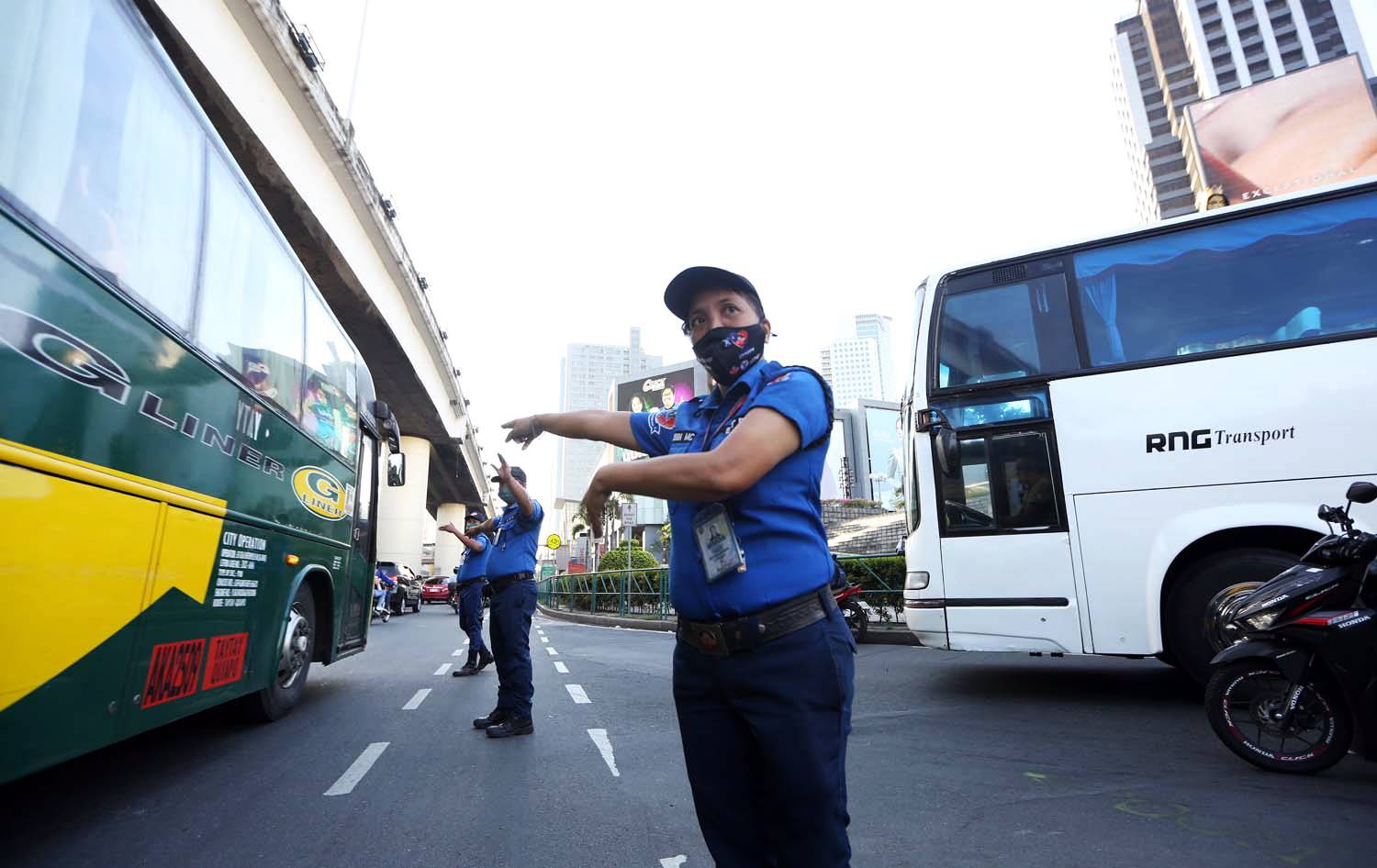UP study: Edsa traffic aides at risk of hearing loss
MANILA, Philippines — Traffic enforcers of the Metropolitan Manila Development Authority (MMDA) deployed along Edsa, among the busiest thoroughfares in Metro Manila, have suffered from hearing loss due to their frequent exposure to harmful noise and lack of proper equipment to protect themselves from this, according to a study by the University of the Philippines Manila (UPM).
Researchers of UPM’s National Institutes of Health (NIH) found that of the 108 MMDA personnel who were part of the study, 13 percent (14 enforcers) “experienced significant noise exposure at work,” and 16 percent (17 enforcers) had “moderate hearing loss or worse in at least one ear.”
READ: Manila Water gives hydration, hand hygiene support for gov’t personnel
According to the research lead, Dr. Kimberly Mae Ong, a research assistant professor at the Philippine National Ear Institute (PNEI), Edsa traffic enforcers who were exposed for eight hours to a sound pressure level of more than 85 decibels A (dBA) were at least “25 percent more likely to experience hearing abnormalities.”
The researchers were “surprised” to find out that none of the MMDA field personnel had the proper equipment to protect themselves against harmful noise exposure.
“Some of them felt that their bandana provided them sufficient protection from noise. This showed us that there is a need for hearing health education, which we hope can be integrated in their training,” Ong said.
‘Need to hear vehicles’
The study titled “Association between occupational noise exposure level and pure-tone audiometry abnormalities among Metropolitan Manila Development Authority employees: A cross-sectional study,” was published in the peer-reviewed Journal of Occupational and Environmental Hygiene in May, with the results of the study released by UPM earlier this month.
It included 108 employees assigned along Edsa, with more than five years in their current positions, comprising both field and office-based personnel.
Each employee wore a noise dosimeter to record noise levels during their eight-hour work shifts. Hearing tests were conducted at least 16 hours after work to avoid the effects of a hearing phenomenon known as temporary threshold shift (or temporary hearing loss).
Asked for comment, MMDA Chair Don Artes acknowledged that their traffic enforcers were constantly exposed to noise and air pollution when on the field but assured that the agency was studying how it could protect enforcers who are guarding Metro Manila’s roads every day, especially from harmful noise.
“Our problem is we cannot completely make them soundproof or make them cover their ears [by any noise-canceling device] because they need to hear incoming vehicles to avoid accidents,” he said.
Noise levels
The decibel scale runs from zero dBA (sounds barely audible to the human ear) up to 130 dBA, the threshold of pain.
A sound level of 85 dbA is equivalent to the noise produced by a food blender, heavy traffic while inside the car, a noisy restaurant, or a cinema.
Various studies pointed out that 85 dBA is considered to be the maximum level of noise workers should expose themselves to for not longer than eight hours to prevent hearing damage or hearing loss.
It is considered 15 times more intense than the 70-dBA level considered safe for human hearing by the World Health Organization (WHO) and Environmental Protection Agency (EPA) safe for human hearing.
Unlike other values which increase at a steady rate, decibel levels increase exponentially. For example, a 10 dB sound is 10 times louder than zero dB, and a 20 dB noise is 100 times louder than zero dB.
However, under the occupational safety and health standards enforced by the Department of Labor and Employment, a worker should not be exposed to noise levels exceeding 90 dBA for eight hours a day.
According to the WHO, a person is considered to have hearing loss if he or she is not able to hear, as well as someone who cannot hear beyond the 20 dBA (equivalent to the sound level of leaves rustling) hearing threshold. It can range from “mild” to “profound” and affect one or both ears.
In mild cases, individuals may have difficulty with conversations in noisy environments, frequently asking others to repeat themselves, but usually do not experience problems in quiet settings.
Deaf people mostly have profound hearing loss, which implies very little or no hearing. They often use sign language for communication.
Productivity, efficiency
“At work, these subtle changes in hearing can affect an employee’s ability to communicate effectively with their coworkers, possibly leading to misunderstandings,” Ong explained.
“It can affect productivity and work efficiency, so there is also a potential economic impact. Significant chronic noise exposure often causes irreversible hearing loss; thus, the focus should really be on hearing loss prevention,” she added.
According to Ong, the study highlighted the importance of regular noise exposure monitoring for traffic enforcers and identifying high-risk areas for targeted noise mitigation.
“Regular noise exposure monitoring should be considered, especially for traffic enforcers, to determine the need for noise exposure mitigation,” she recommended.
The findings have broader implications for other occupations exposed to road traffic noise, such as street sweepers, vendors, and public transportation drivers.
Ong hoped that the results would influence public health policies and workplace safety regulations, promoting regular noise assessments, educational programs, and noise exposure control measures.
“I hope this research helps to create awareness about the possible effects of prolonged noise exposure, especially to road traffic noise,” she said.
As a follow-up, the research team plans to conduct a study to track the long-term hearing health of MMDA employees and broaden their research to include other major roads in Metro Manila.
“We would like to broaden our scope and include employees assigned to other major roads in Metro Manila. Once we have more data, we can start a pilot program to evaluate the effectiveness of various noise mitigating interventions and hearing protection strategies,” Ong said.















